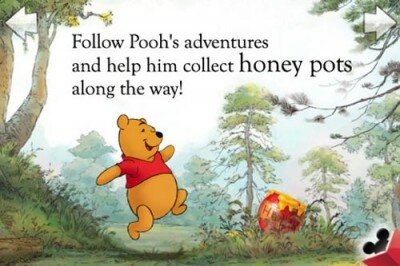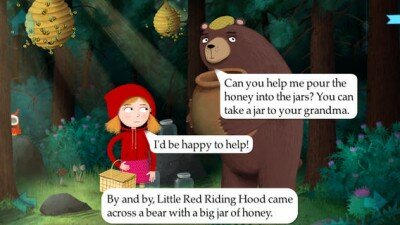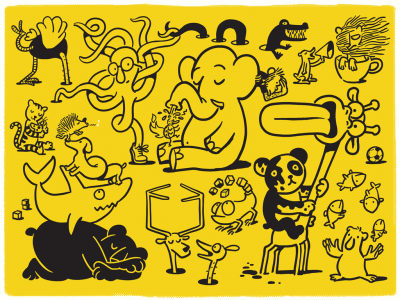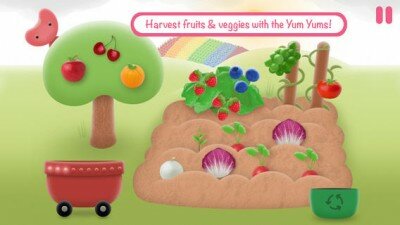“38% of young children under the age of 2 use mobile media”
A growing audience with plenty of potential, but what do brands need to watch out for?
A survey commissioned by Commonsense Media discovered that mobile media use amongst children aged 0 – 8 years old is increasing rapidly, even more so than TV, DVD and computer use.
It’s true, TV is still what’s keeping the majority of young children entertained, but mobile media is about to overtake, and this is what they’re doing, with the average daily use of mobile devices increasing from 5 minutes (2011) to 15 minutes (2013) a day:
63% – Playing games
50% – Using apps
47% – Watching videos
38% – Watching TV / movies
30% – Reading books
Parents & mobile media
For many parents, forgetting to take the iPad on a shopping trip could lead to disaster. Whilst there are many reports from healthcare professionals warning against the overuse of mobile media due to its addictive qualities and potential stunting of social skills, parents are finding these a lifesaver when combatting a bored child. Not only are tablets portable, but they also versatile – allowing for activities that children can do on their own, such as watching films or playing games, as well as ones that require adult interaction. With a flood of apps and games that promote education, it appears to be a win – win situation for both parent and child. Indeed, a recent study by VTech reported that 42% of parents buy portable electronic devices for their children (aged under 11 years) for educational usage.
Furthermore, even for very young children, mobile media has become so intuitive that it’s no longer a talking point when someone uploads a video of their nappied-up toddler competently navigating Wheels on the Bus long before he even begins to talk. Unlike computers and other handheld gaming devices, mobile media uses touchscreens, which are perfect for imprecise little fingers.
Brands and mobile media for children
As Apple iTunes is on the cusp of launching a specific Kids section later this year, there are huge potentials for brands to tap into the youth mobile media sector, with games, apps, mini series, interactive publications and more. But often, with parents as the gatekeepers, brands have to market to two audiences, those with purchase power and the users.
Three things brands should steer clear of when developing for mobile media:
1. In-App-Purchases (IAP): many parents are turned off by ‘irresponsible’ brands who offer inviting and exciting purchases that can lead to hefty bills. With some IAPs within apps designed for children at £60, it’s no wonder large bills can quickly accumulate. There are also many who believe that advertising that targets the under twelves’ is deceptive – unlike TV, where adults still retain control of the purchasing power, as it’s easy for children once they’re in an app, to make purchases without realizing it. Plus, children don’t yet have the cognitive capability of discerning between a commercial and a normal video clip; they take everything at face value. If you have to include IAPs, ensure there’s a way for parents to turn this functionality off.
2. Inappropriate content: children have an uncanny knack of knowing what’s inappropriate and some brands target this. If it’s a ‘hunting’ game, make sure the graphics are toned down so that they’re suitable for children and there’s no ‘killing’ involved.
3. Applying adult mechanics to children’s apps: A child thinks differently, has smaller more uncoordinated fingers and therefore the app needs to be built to allow for this. For example, if you’re asking a child to do something, like pick flowers in the virtual wood, give the said item a visual characteristic. For example, a ‘wiggle’, or a glow. Eliminate gestures that require precision. This includes ‘swiping’ to turn the page. For little fingers, swiping can be rather tricky so use bold arrows at the top of the screen instead (the lower part of the screen is a hotbed of accidental touching so don’t place any buttons there).

This shows great use of the arrows as buttons and at the top of the place. The menu button (bottom right corner), would be best placed at the top of the page, ideally in the middle.
The Top Six Apps for Children
If you’re selling in the Apple iTunes Store, regardless of whether you’re a large or small brand, the playing field is moderately even. iTunes promotes apps with great content, which keeps the standard high. Here’s our line-up of some of the great kids apps currently out there.
Kids Learn Mandarin Free & IAP (Fingerprint)
Category: Education
Device: iPhone / iPad
How much? Free for the first lesson. The basic pack is £2.99, the full pack is £5.49
Why is it great? Many parents are now choosing Mandarin to sit alongside other languages such as French and increasingly more are giving their children a head-start with apps such as this. Through the use of mini-games, videos and text, children aged 2 – 8 years old can become familiar with and learn the basics of Mandarin in a fun and entertaining way. It’s like the modern day equivalent of Mavis Beacon’s Typing Lessons.

Little Red Riding Hood (Nosy Crow)
Category: Story-telling
Device: iPad / iPhone
How much? £3.99
Why is it great? A beautifully illustrated and animated, interactive story that allows its users to influence how the story plays out by choosing Little Red Riding Hood’s paths through the wood. On the way, she collects items and finds interesting objects.
A Troop is a Group of Monkeys (Little Bahalia Publishing)
Category: Story-telling
Device: iPad
How much? £2.49
Why is it great? A musical story with a charming theme song that teaches children the plural nouns for animals, including monkeys, bats, owls and parrots.
Squigglefish (Stripey Design)
Category: Education
Device: iPad
How much? £1.49
Why is it great? It mixes activities in the real world with a screen world. Users draw physical pictures of fish that they then scan in for some swim-time in the digital aquarium.
Petting Zoo (Christoph Niemann)
Category: Education
Device: iPhone / iPad
How much? £0.69
Why is it great? Kids don’t even need to understand English to get hours of fun from this charming app. It’s a selection of 21 hand-drawn animals that react in quirky and amusing ways when prodded, poked and swiped at.
Yummiloo Rainbow Power (Night & Day Studios)
Category: Fun
Device: iPhone / iPad
How much? £1.49
Why is it great? Kids help the Yum Yums harvest food, picking fresh vegetables and helping to sort ripe fruit from spoiled. It helps children become more familiar with vegetables and fruit and lays the foundation for an acceptance of healthy food.
Mobile media is certainly looking as though it’s on the increase and one that is set to overtake more mainstream media such as television. However, this also means that parents will become more discerning as the choice of apps becomes more varied and technology is used in more and more creative ways. Before you had the traditional model of parents as the purchasers and children as the consumer, but now teachers are now increasingly part of the mix as influencers.
It’s also worth thinking about the second screen and innovation around that area. For example, in many households, the TV is on, but mobile media is the dominant screen. Having a strategy that involves both and complements each other, would be a step towards making yourself stand out from the crowd.









